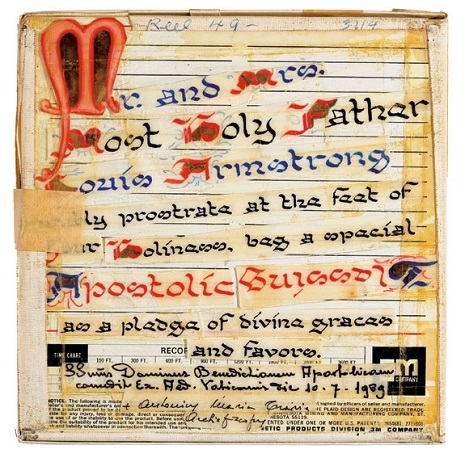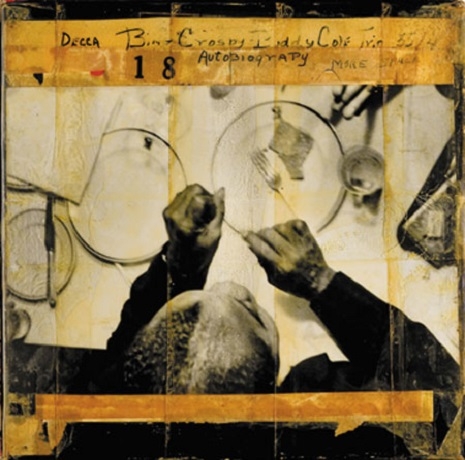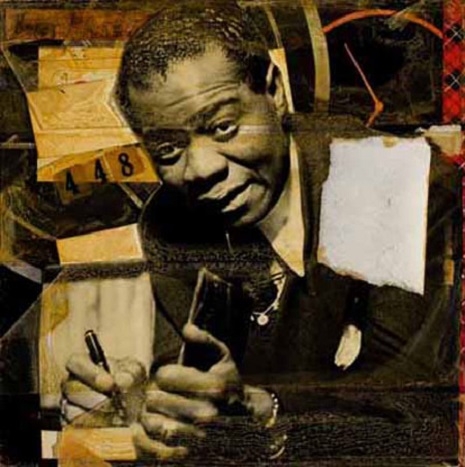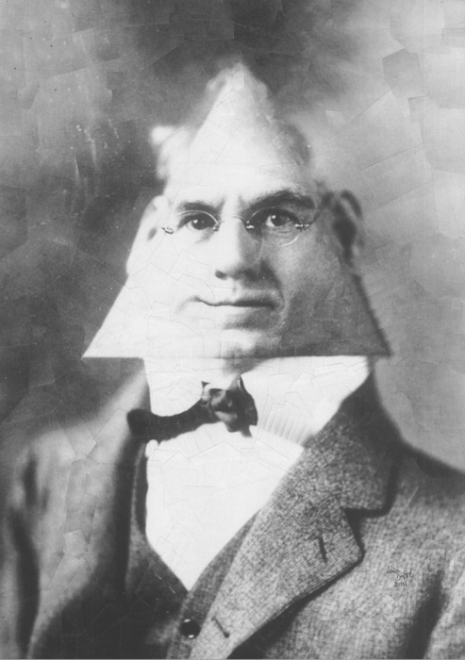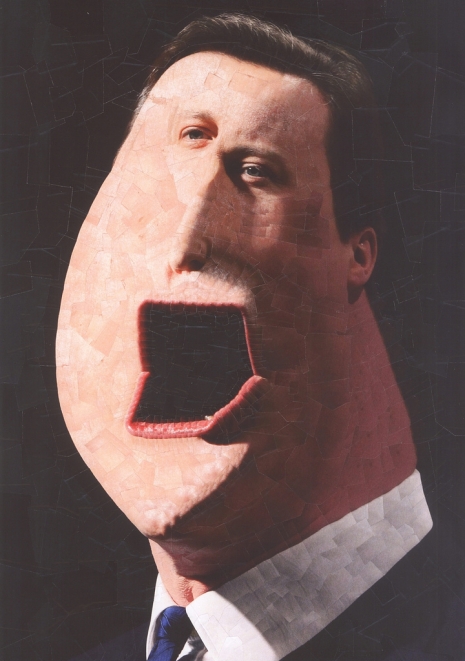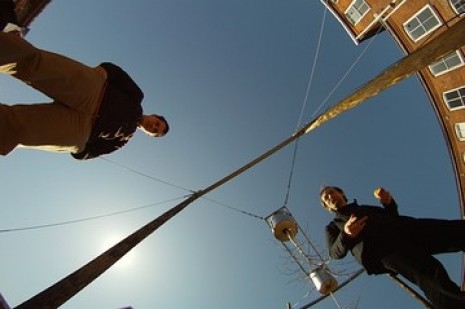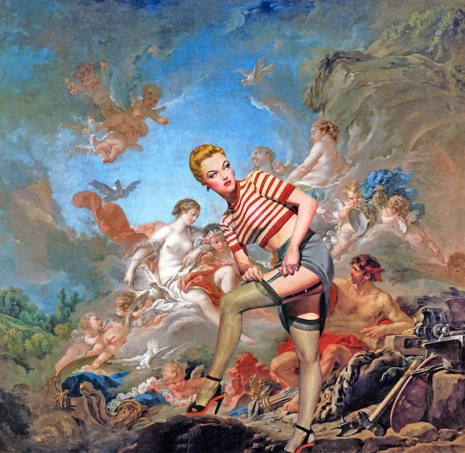
The artist Thomas Robson describes himself as a “recovering ex-broadcast television graphic designer.” He spent fourteen years, “focused on producing graphics and animations for the BBC Newsroom in Belfast during some of the most traumatic years of the Northern Ireland conflict.”
The experience of working with “a highly edited and curated visual language” gave Robson an “increasing unease” to broadcast television—where the finished product “deliberately sets out to blur viewers’ ability to differentiate between the contrived world and the real one.”
Every day he was “editing and re-contexturalising imagery into new transient compositions based around multiple elements and perspectives”—all of which (he admits) may have been “a precursor of [his] collage experimentation?”
Robson began to wonder how he could make viewers question the received imagery more deeply. He started to create collages which fused classic paintings with photography and populist imagery. He tells me he was “visually experimenting, creating visual short circuits disrupting the context form and composition of the original pictures. Generating transitory new types of provisional imagery possessing an amalgam of the enigmatic and the accessible. Offering compelling interplays between the residual associations of the original pictures and the dissonances of the imposed visual collisions.”
He describes this process as Art Remix—“a new categories of art composition.”
In which new layers of visual interventions are used to reconstruct and transform the significance of images, place them in new contexts and in so doing make new demands on the viewer.
It is an approach which seeks to short circuit peoples’ common interactions with representational fine art & photography. Forcing them to question images more intently, and in so doing develop enhanced critical skills and visual literacy.
Home Made Histories mixes classical painting with images from pulp fiction. He describes this work as “Rewiring aesthetics, with new visual narratives.”
One important influence on Robson’s life has been living though thirty years of sectarian conflict in Northern Ireland. This Robson claims has made him “highly sensitive to the repressed emotions and hidden meanings which underpin many social interactions and conversations.”
This search to discover the hidden or the repressed voice has always informed my reaction to the highly representational portraits of western art. To my eyes they always evoke questions of what informed their production, just how accurately do the finished pictures conceal or reveal the sitter’s true identity, the artists personality and indeed how such pictures strive to totally extinguish the context of their production in the studio.
From the democratic and more open contexts of today, it is as if the concept of creative expression was repressed by a slavish adherence to a highly codified academic style of painting. Visual language was defined and corralled in a rigid hierarchical structure, by a self appointed aesthetic elite who had appropriated the power to adjudge and frame what was good and bad art, and in doing suppress and control artistic and creative expression. It is this suppression of expression and selective edit of social memory that creatively excites me.
Home Made Histories depict 17th century and 18th century family portraits juxtaposed with sensationalist images of violence pulled from pulp magazines and novels. Here is a secret narrative to what the original artworks are possibly hiding—abuse, oppression, and the growth of empire. Robson’s artworks encourage the viewer to engage and question rather just passively admire.
I like Robson’s work and wanted to know more. I winged him a few quick q’s by email to ask about his inspiration and ideas behind Home Made Histories.
Thomas Robson: I was listening to James Elroy’s Blood’s A Rover audio book (HIGHLY recommended!) which is pretty pulpy in nature, whist collaging a collection of elements from ‘men’s magazines’ with ‘fine art’ images. To see what would happen when such disparate elements were in forced collision. Basically visually re-interrogating received ‘fine art’, by using collage techniques in combination with the tools, visual language and grammar of today.
In practice it quickly a became apparent the narrative dissonances caused by the widely differing elements. Were successfully impeding received ways of digesting the underlying ‘fine art’ images, by offering intriguing and highly accessible new visual narratives. Pictures cleansing viewers’ visual palettes, enabling new meanings swim in and out of focus.
But most importantly of all I really like the strong aesthetics resultant, and there’s a lot more good work to come. Which when translated into paintings should result in some pretty strong imagery to intrigue, excite and repay repeated viewings.
***
Robson’s work has been included in several books—most recently Anatomy Rocks—Flesh and bones in contemporary art and a new exhibition The Brex Pistols Shrapnel Show will be held on December 5th, The Old Rifle Range, Killyleagh. His work is also available to buy as postcards.
If you like what you see then do check out more of Thomas Robson’s artwork here.


More of Thomas Robson’s pulp histories, after the jump…






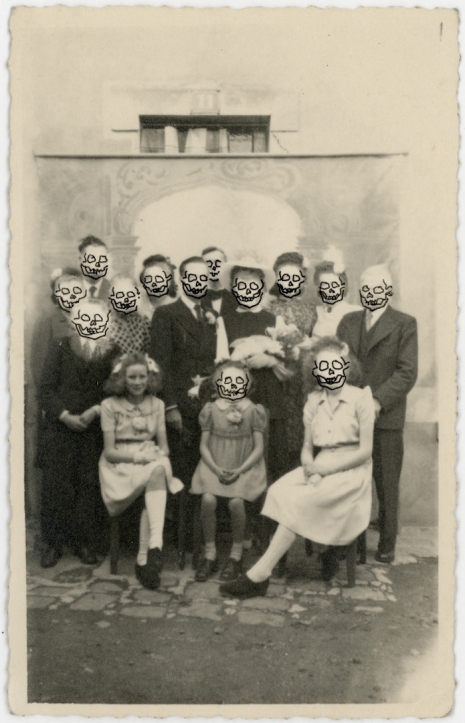
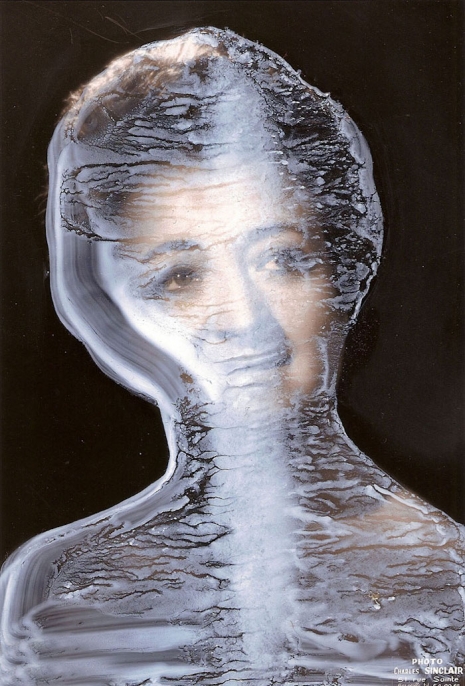
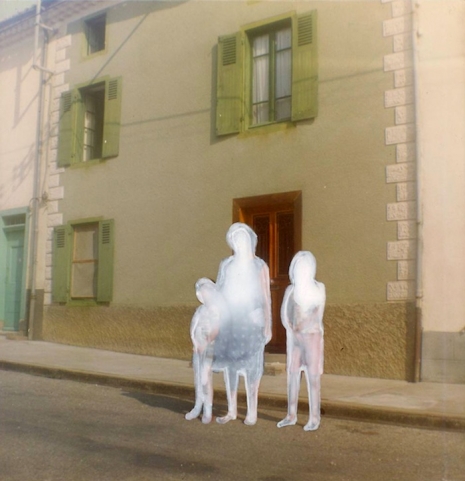
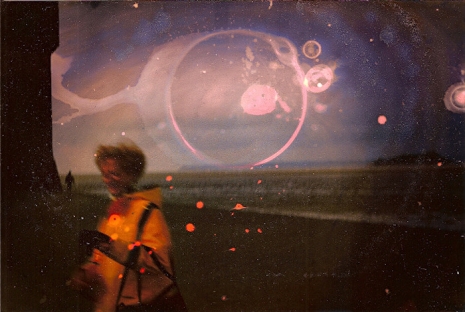
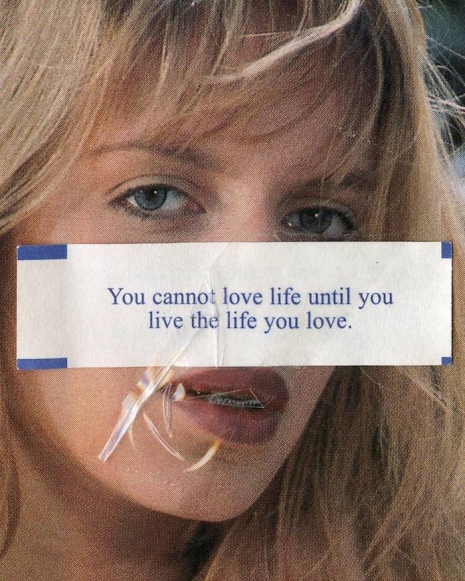
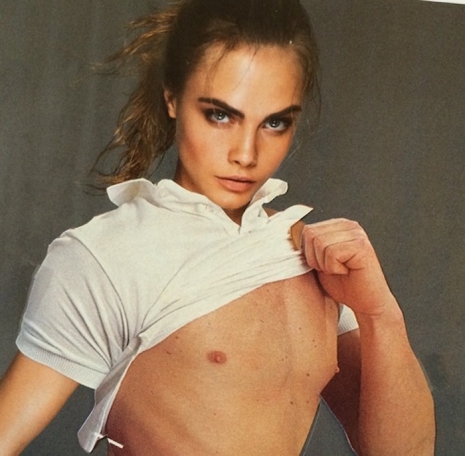

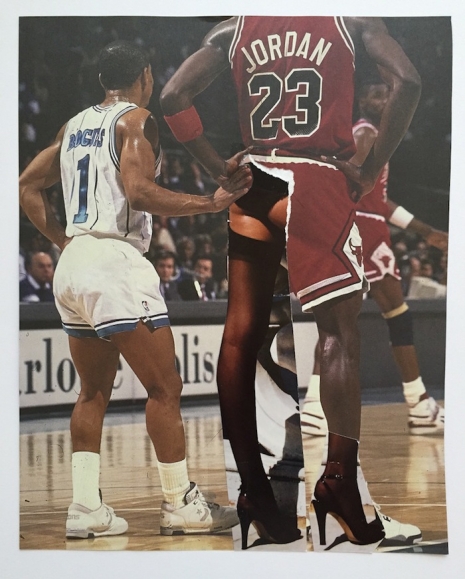

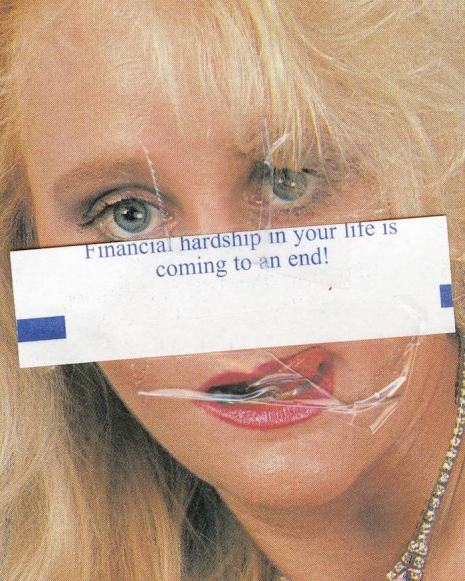
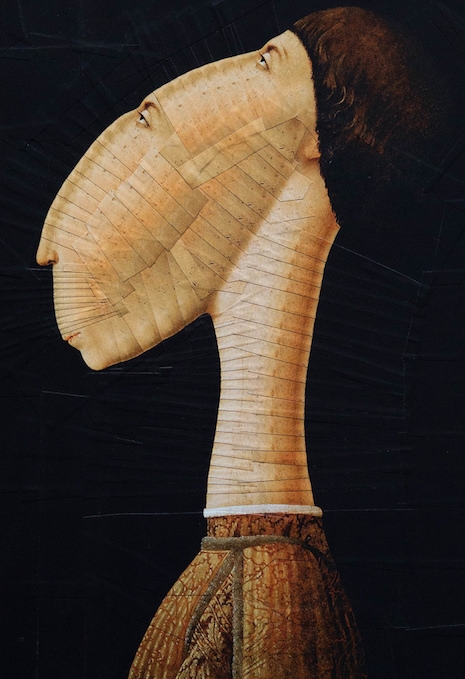
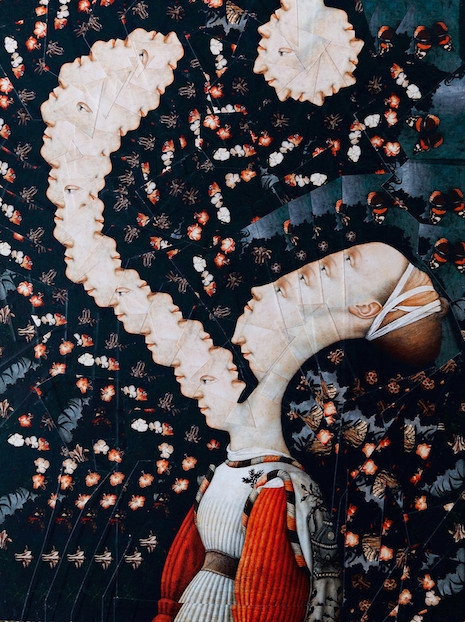

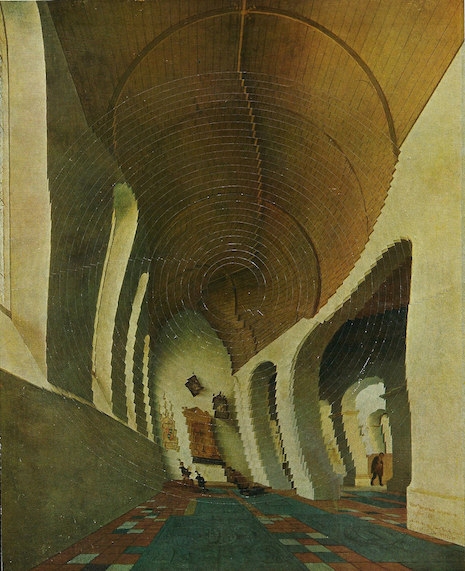

_72dpi_465_687_int.jpg)








